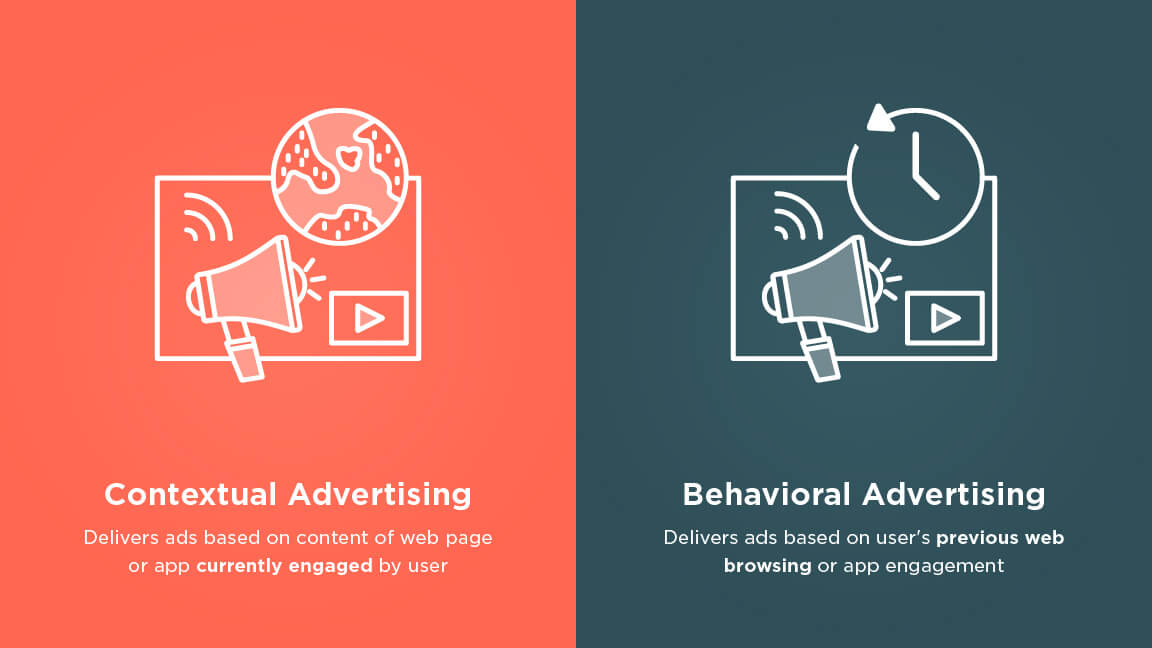Insights from Embracing Contextual Advertising for Privacy-Safe Growth webinar
As digital advertising rapidly evolves, contextual advertising offers a navigational tool for brands to chart a course through the digital world, exploring privacy-first frontiers and mapping new territories for engaging audiences. In an illuminating webinar hosted by Kochava, a panel of industry experts delved into the realm of contextual advertising and its role in driving privacy-first growth. The panel, comprising Mark Menery, VP, Global Head of Sales at Dataseat (Verve Group); Adrienne Rice, Account Director at M&C Saatchi Performance; and Lane Schechter, Director of Product at Verity, GumGum; shared valuable insights into this timely advertising method and its prowess in negotiating a privacy-forward digital topography. Drawing on their expertise and extensive experience, the guest presenters highlighted the current state of contextual advertising, its relevance to brands today, and best practices for leveraging this approach amid the ever-changing digital advertising landscape.

The Evolving Landscape of Contextual Advertising
The panelists recounted the evolution of contextual advertising, tracing its origins from its prominent past in traditional media to today’s more sophisticated systems. Traditionally, contextual advertising involved aligning advertising messages with the content of a publication or program, such as placing ads for home improvement products in a house and garden magazine. With the emerging digital landscape, behavioral targeting came to the fore, as this type of ad targeting proved highly effective and measurable via individual user data such as past online/mobile behavior and device IDs. Menery delineated the key differences between contextual and behavioral targeting: Behavioral targeting focuses on an individual’s past digital activities and interests in order to serve personalized ads, while contextual advertising relies on understanding the environment and content a user is engaging with at the moment. Shifting into a contextual approach aligns with the growing emphasis on privacy and data protection, making it a compelling option for advertisers.

Embracing the Shift: The Growing Importance of Contextual Advertising
As the digital ecosystem evolved, contextual advertising became more sophisticated, transitioning to picking up contextual signals from publisher apps, keywords, user engagement, time and location, semantics, content categories, and so forth. This has enabled a viable resurgence of contextual advertising as an effective methodology in a landscape increasingly sensitive to the protection of personal information. Because contextual advertising does not require tracking individual user data or behavior, it is inherently a privacy-forward approach.
To this point, the webinar experts emphasized its importance in the face of increasing privacy regulations in today’s digital world. The deprecation of device identifiers has significantly impacted the advertising industry by reducing the availability of user-level data for behavioral targeting. The panel noted that their companies’ respective clients are indeed employing contextual strategies, underscoring the shift to privacy-first methods necessitated by the introduction of various government- and platform-led privacy regulations and resultant phasing out of user-level device IDs as well as third-party cookies on the web. Contextual advertising has become a viable, privacy-compliant alternative for brands and advertisers—who still need to reach their audiences in a targeted and effective manner.
The Power of Contextual Intelligence
The webinar unpacked how advanced technological capabilities are enabling a new era of cutting-edge contextual analysis. Menery gave participants a view on how Dataseat leverages richer contextual signals along with campaign details to generate cross-app affinity scores and expand target lists likely to perform toward client outcomes. Schechter explained how his company’s contextual intelligence technology, Verity, has evolved contextual from its traditional roots to a “Contextual 3.0” intelligence that uses AI and machine learning models to understand consumer mindsets within the digital environment.
Verity utilizes computer vision, natural language processing, and sentiment analysis to analyze the textual elements, imagery, audio, and video within web pages, apps, and other digital content. This enables Verity to go beyond basic keyword or category targeting and produce a deeper semantic understanding of the “aboutness” of an environment. The platform then outputs detailed labels and signals that capture the content’s tonality, emotion, and attention metrics. By analyzing the semantics and logic of language at scale, Verity can derive human-like insights and deeply understand digital environments and content.
”You’re meeting your consumer in an environment that they're already interested in engaging in with a specific type of content, and they've made that intention clear.
Lane SchechterDirector of Product at Verity, GumGum
Marketers can leverage these rich contextual signals to move beyond traditional content alignment and deliver programmatic advertising that is truly relevant and resonant with the consumer’s current mindset, mood, and intent. This methodology relies on absolutely no personal user or behavior data whatsoever. Rather, its dimensional comprehension of the environment itself enables the right message to be matched to the right context—ultimately driving higher engagement and performance. Brands and publishers can now leverage fortified contextual signals to deliver relevant and impactful advertising experiences in a fully privacy-forward solution.
Bridging the Gap: Contextual Advertising and Performance Challenges
While the group championed the effectiveness of contextual advertising, they also addressed potential roadblocks advertisers can face in target accuracy, scaling, measurement, and achieving desired performance metrics.
Because contextual targeting relies on understanding the content and environment rather than an individual’s past behaviors and interests, it often requires a more patient “crawl, walk, run” orientation compared to the faster ramp-up of behavioral targeting. To address the challenge of homing in on a desired demographic who might engage with apps or sites that attract a widely diverse audience, the panel recommends a test-and-learn cycle: Start with a wide variety of apps or keywords, refining targeting based on outcomes to tease out high-performing environments.
To optimize contextual campaigns and hit KPIs, the webinar guests recommended working with trusted partners able to provide transparent specificity and guidance. This includes access to detailed, accurate reporting on the specific contextual signals and environments where ads are being served so as to assess their performance and ensure brand safety. By isolating contextual strategies and analyzing which environments drive the best performance, advertisers can refine their approach and allocate budget more effectively.
Schechter noted that the issue of scale, particularly in the CTV space, is a challenge within contextual advertising, as in the video space there is limited access to the signals that enable nuanced contextual analysis of content. The panel is hopeful for increased signal availability commensurate with growing demand.
Contextual Advertising Across Channels
The discussion explored the efficacy of contextual advertising strategies across various digital channels, including social media platforms and visual-driven environments—acknowledging that certain platforms perform better than others. Rice noted that while contextual targeting is largely intuitive in traditional media, it can be challenging in user-generated environments like Meta, where content is not categorized or themed so as to allow for precise alignment. On the other hand, she highlighted the potential on platforms such as YouTube and Reddit, where content is organized into specific channels or subreddits with clear thematic focus.
The panelists noted the complementary nature of contextual advertising and search engine marketing: While search is highly effective at capturing users with immediate purchase intent, contextual advertising, which is more top-of-funnel, builds awareness and consideration earlier in the customer journey. Rice explained that contextual ads can generate interest, then drive users to search for the product or service, effecting a synergistic relationship between the two approaches.
The group also brought up the importance of integrating contextual strategies with other marketing initiatives. Schechter noted that Verity aims to bridge the gap between contextual signals and customer intent, analyzing factors such as content type (for example, editorial vs. search results vs. product pages) to better understand the content consumed in order to determine consumer intent. This enables advertisers to optimize messaging and placement that align with the user’s current interest or frame of mind.
Getting Started and Best Practices in Contextual Advertising
The webinar experts offered valuable guidance and insights on contextual advertising best practices and tips for getting started. They emphasized the paramount importance of thoroughly understanding the target audience and their media consumption habits, researching which users to reach and where they spend time online.
To build effective contextual campaigns, the panelists reinforced the key objective: integrally aligning creative content and messaging with the context or placement where the ads will be served, enhancing relevance and effectiveness of the advertising experience. This includes tailoring creative to specific industries or audience interests, themes, and mindsets, as opposed to a one-size-fits-all process. Additionally, the group recommended taking a test-and-learn approach, trying out different contextual signals and environments to identify which work best for driving performance. Menery highlighted publisher/app, exchange, country, and specific placement within the app as the most pivotal contextual variables, with myriad other signals such as day and time also relevant.
The webinar experts reiterated the importance of selecting high-quality contextual advertising partners and leveraging their expertise. Clear signals for measuring targeting and optimization testing are critical, as is the resolve to accurately isolate and assess strategies. Because contextual advertising may drive more incremental progress compared to other tactics, the group counseled a patient, iterative approach to test, learn, and refine strategies around elements like targeting, ideal environments, and budget allocation. Optimizing in close collaboration with trusted partners is key.
Measuring Success in a Privacy-First Landscape
The webinar delved into the importance of leveraging privacy-focused measurement solutions to assess performance of contextual advertising campaigns, especially given the diminution of traditional user-level tracking and attribution methods. A poll of webinar registrants revealed a high level of concern around the ability to measure performance effectively within a contextual advertising paradigm. Transparency, measurement, and ongoing testing and optimization are integral in assessing performance.
The panelists also noted the role of methodologies such as marketing mix modeling (MMM) as alternative ways to measure campaign effectiveness. Such solutions enable advertisers to connect the dots between contextual ad exposures and downstream conversions, without relying on individual user data. By utilizing privacy-durable signals and aggregated insights, brands can gain visibility into the impact of their contextual strategies while respecting consumer privacy, bridging the gap between contextual targeting and the achievement of business goals.
”There is that sort of more deterministic approach coming with these privacy-first attribution frameworks from the operating systems. And again, it's great to see Kochava on top of that and looking forward.
Mark MeneryVP, Global Head of Sales at Dataseat (Verve Group)
The discussion also touched on the role of consent and privacy considerations around measurement within the contextual advertising landscape. The panel agreed that consent is less of a concern within the contextual realm, as focus is inherently on the current context and intent of the consumer rather than individual user data on past digital activities or personal identifiers. However, they emphasized the importance of leveraging privacy-first measurement solutions, such as Apple’s SKAN and Google’s Privacy Sandbox, to ensure accurate and compliant attribution. It is also important to note that post-ad consent becomes necessary when tracking to attribute conversions by users after they interact with the ads.
The Future of Contextual Advertising
Looking ahead, the experts agreed that contextual advertising will continue to evolve along with the digital landscape, with advancements in areas like voice-activated technology, speech-to-text enhancements, and further integration of artificial intelligence and machine learning. These innovations will enable richer understanding of consumer intent and attention patterns, enabling marketers to deliver ever-more relevant and impactful advertising experiences that respect user privacy.
The future of contextual advertising appears bright. With continual privacy regulation changes and growing concern over personal data usage, contextual advertising offers a compelling path to reach the right audience at the right time. Marketers who understand their audience’s needs and preferences, devise informed contextual advertising strategies, leverage smart technology, continually test and refine their approach, trust their partners, and nurture an ethos of transparency are well positioned to enjoy sustained success in their advertising efforts.
Catch the Full Webinar on Demand
The complete on-demand webinar, Embracing Contextual Advertising for Privacy-Safe Growth, is available now! The discussion serves as a comprehensive map of the evolving landscape of contextual advertising and its importance in the privacy-focused digital landscape. By embracing the compass of contextual strategies and leveraging the expertise of industry leaders, marketers can unlock new opportunities for growth while maintaining the trust and respect of their target audiences. Chart a course and embark on this journey to privacy-safe advertising success!





